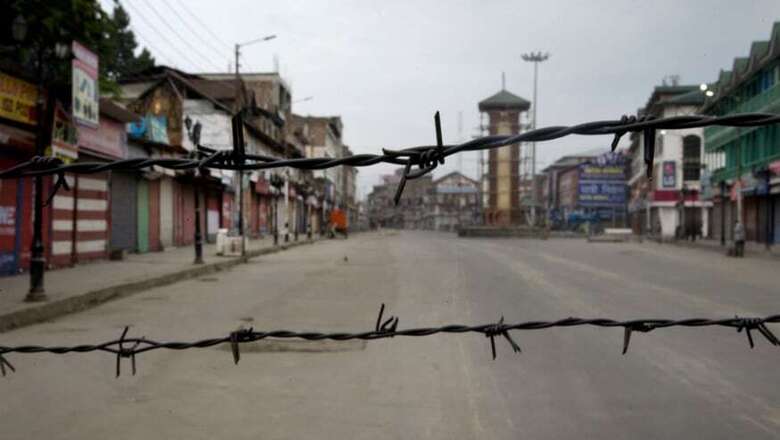
views
For Mughal emperor Jehangir, Kashmir was paradise on earth. His famous quote goes like this: “If there is a paradise on earth, it is this, it is this, it is this”. But for some years, Kashmir has been a troubled paradise.
Prime Minister Narendra Modi, while launching the BJP’s campaign for Maharashtra elections last week, said, “We want to create a paradise in Jammu and Kashmir once again and hug every Kashmiri.”
Revealing his plans for the future, he said, “Earlier, people used to raise the slogan ‘Kashmir Hamara Hai’, but the time has come to take Kashmir to new heights of development. The slogan is ‘Naya Kashmir Banana Hai’.” Seeking public support, Modi recently said, “There is no bigger decision than Kashmir.”
Will Modi be able to deliver a new Kashmir? Indeed it is possible, but cannot be done in a day or a year. It is going to be a long haul, considering the current volatile situation in the state after the scrapping of the state’s special status last month. Unfortunately, the state has suffered conflict, violence and disturbance for long. For two generations, children have missed their childhood because of the situation. All stake-holders, including locals, authorities, politicians as well as the national parties have to come on board to bring Kashmir back to good health. Above all, there is a need to have a roadmap, and the government seems to be confident of delivering its promise.
The Modi government has managed the Kashmir situation reasonably well so far. The impact will be known only when the security restrictions are removed and political leaders who are under arrest since August 5 are released. The first priority for the government is to ensure the normalisation of the situation at the earliest, though it is easier said than done. Modi has promised that life will soon return to normal in the Valley, and the forfeited statehood would also be restored in future.
The government claims that most of the restrictions have been eased, schools have been reopened and telephone connections restored. However, there is no signal on the release of political leaders, including former chief ministers Mehbooba Mufti, Farooq Abdullah and Omar Abdullah.
On the diplomatic side, the External Affairs Ministry has launched a diplomatic offensive led by the Prime Minister himself to build international opinion in India’s favour. Justifying the government’s actions, external affairs minister S Jaishankar said that it wasn’t possible to stop communications between militants without an impact on all of Kashmir, stressing that the Valley was in a mess before August 5.
And so far, this diplomacy has succeeded, as major world powers have not been critical of India’s handling of the Kashmir situation, treating it as a bilateral issue. However, if the curbs continue, India’s credentials may come under pressure from human rights groups.
Secondly, one of the Centre’s key projects is to rehabilitate Kashmiri Hindus. Almost three decades have passed, but the Kashmiri Pandits who were thrown out of their homes have not been able to return to their homeland. When Modi met a delegation of Pandits in Houston this week, he told them, “Kashmir mein nayi hawa bah rahi hai (new winds are blowing in Kashmir), and we will all build a new Kashmir together that will be for everyone.”
Thirdly, Modi has ambitious plans for J&K. He has promised development, jobs and peace to the people of Jammu and Kashmir. He has also promised better education and healthcare, new railways, airports and roads. “We will take Jammu and Kashmir to new heights,” he had declared.
The Centre also hopes that investment might flow into Kashmir. The reality is that investments will come only after normalcy returns, although India’s richest industrialist Mukesh Ambani has come forward to invest. BJP-ruled states like Karnataka have also announced some help. The Centre’s stress is on farming, bridging the trust-deficit, boosting exports and promoting tourism.
Modi has exhorted Bollywood to start shooting films in the state, but this too can happen only when complete normalcy returns. According to official data, though the poverty levels of the state are half the national average, per capita income at $1,333 was lower than the national average of $1,778.
As for political leadership, the Modi government wants to end the dominance of the Abdullahs and Muftis, and wants to encourage younger, newer leaders. The BJP is looking to pick up new faces from the new generation of leaders.
Kashmiris now have an opportunity to turn this moment to their advantage and build a solid economy and infrastructure. If peace returns, if the development card works, if the political parties are united to revive J&K and if Pakistan keeps off -- there are many such ifs -- there is every reason to believe that a New Kashmir can be created.
(The author is a political analyst. Views are personal)




















Comments
0 comment